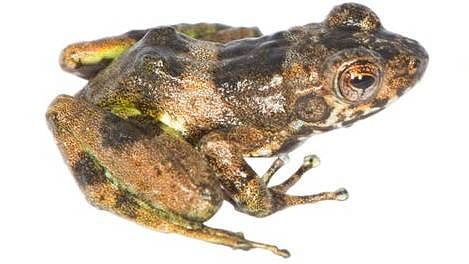When we talk about how threatened animals or plants are, we will almost always reference their statuses on the Red List. Created by the International Union for Conservation of Nature – a global organisation that seeks to direct and shape conservation efforts – the Red List uses a set of criteria to evaluate the extinction risk of thousands of species and subspecies.
On the Red List, species are given a rank on a scale of least concern (no conservation action needed), near threatened (almost qualifies for one of the threatened categories), vulnerable (at risk of falling down the scale), endangered (conservation action needed), and critically endangered (urgent conservation action needed). There are also three kinds of extinct; regionally extinct, extinct in the wild, and extinct.
Finally, there are two more categories that don’t say anything about the threat status of the organisms: data deficient (we don’t know enough) and not evaluated (we haven’t figured it out yet, but wanted to keep its name on the list).
The Red List is the only one of its kind. While there are other organisations that have similar goals of assessing the conservation concern of species, the Red List is the only one to do so across all organisms at a global scale.
But, as my colleagues and I argue in a recent paper, the International Union for Conservation of Nature Red List can be inaccurate because it fails to acknowledge uncertainty, specifically taxonomic uncertainty. That is, uncertainty about how organisms are named, defined and classified according to their shared characteristics or how they evolved.
The result is that poor assessments are made on the basis of poor quality data quality. This could lead to the misallocation of resources with widespread costs, including the loss of a species without realising it.
Species complexes
One way that taxonomic uncertainty can manifest is in the form of species complexes. Species complexes are when more than one species masquerades under the same name. Sometimes the species are difficult, or impossible, to tell apart.
A huge number of “species” are actually turning out to be species complexes. Giraffes, for example, may be four species, not just one. And the African elephant is actually two separate species: the forest and Savannah elephant. They are as evolutionarily different from each other as lions and tigers are from one another.
In smaller, less intensively studied species, complexes are much more frequent.

Often, we find out about species complexes more or less by accident; we sequence the DNA of a bunch of animals, only to find out that they are not all the same thing, but in fact two or more different things. This is the surest method to realise that you are working with a species complex, but it’s not the only one. For instance, we can find out we are working with a frog species complex when we realise that they have different mating calls.
Ultimately, species complexes can be resolved but it needs careful taxonomic research, often using more complex methods – like DNA analysis.
What species complexes mean for the Red List
How organisms are classified – their taxonomy – is the cornerstone of extinction risk assessments. Because of this, major uncertainties in taxonomy, like the case for species complexes, should be grounds for assessment as data deficient on the IUCN Red List.
But the IUCN guidelines strongly discourage the use of data deficient. They encourage the use of even minimal data to assess the species into one of the other categories. This means that even if only one animal of a certain species has ever been found, it can still be assigned a threat category.
The guidelines also suggest that species complexes should be assessed as a single species, even if they are known to actually be several species. As a result a single species within it can go extinct without anyone noticing.
These policies need to be revised.
In our paper we argued that belonging to or constituting a species complex should qualify a “species” as data deficient for the Red List.
By listing species complexes as data deficient, we can highlight the fact that taxonomy is a vital part of the conservation of species; that it is important, and needs to be funded and promoted as a first step in the protection of many species.
Governments must also recognise the importance of taxonomy-focused fieldwork. All too often permitting agencies are refusing permits looking at species complexes, because they perceive the name to be clarified when it appears on the Red List.
Mark D. Scherz, Research scientist, Technical University Braunschweig
This article is republished from The Conversation under a Creative Commons license.
Also read: A deadly fungus is killing frogs and the human toll of this massacre will be heavy
![]()







The change to the title really changed the meaning here. The IUCN Red List is a valuable and important resource. You should use it! Just, users need to be aware of its flaws, and the IUCN itself needs to review its policies with regards to taxonomic uncertainty.